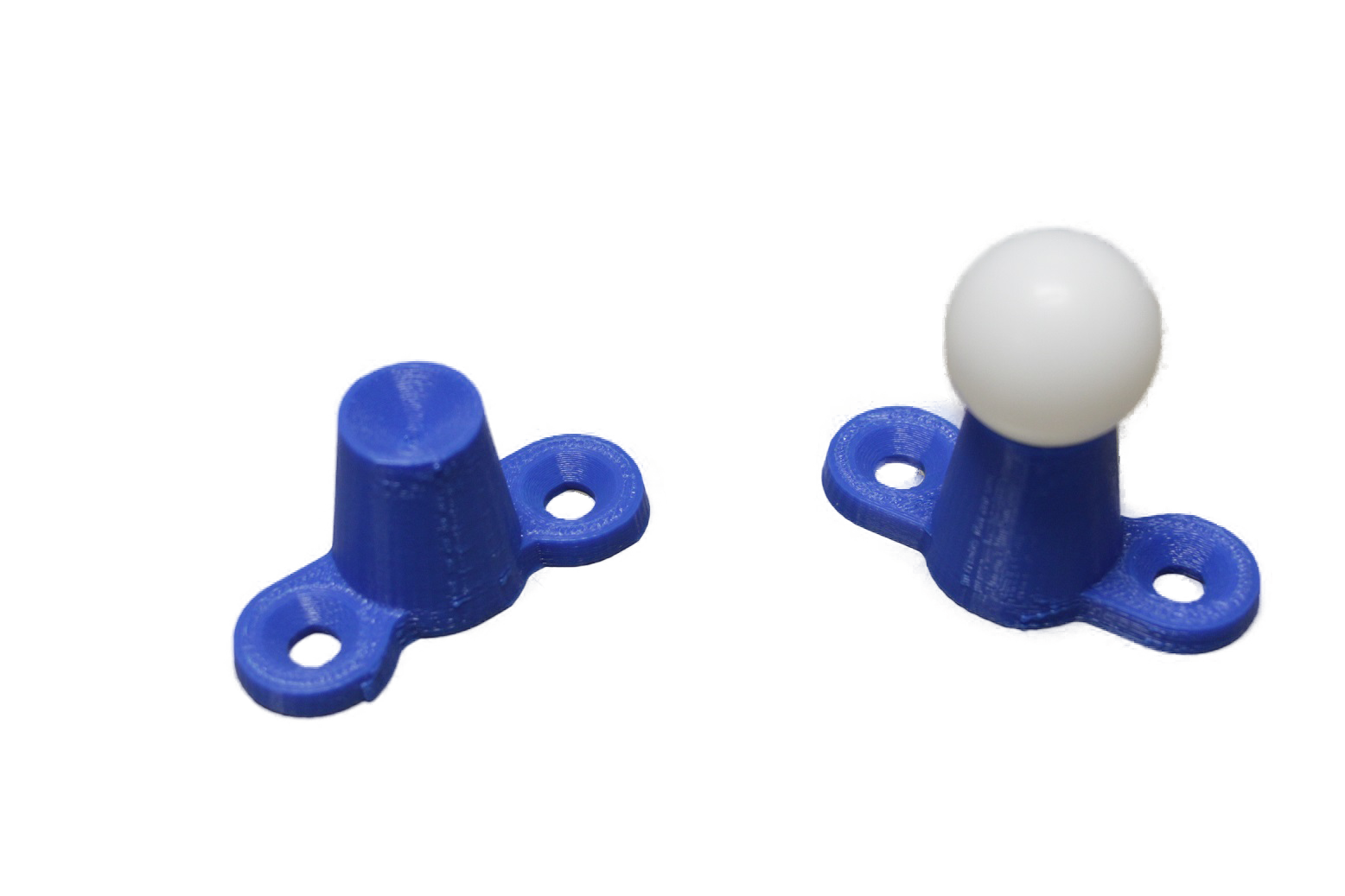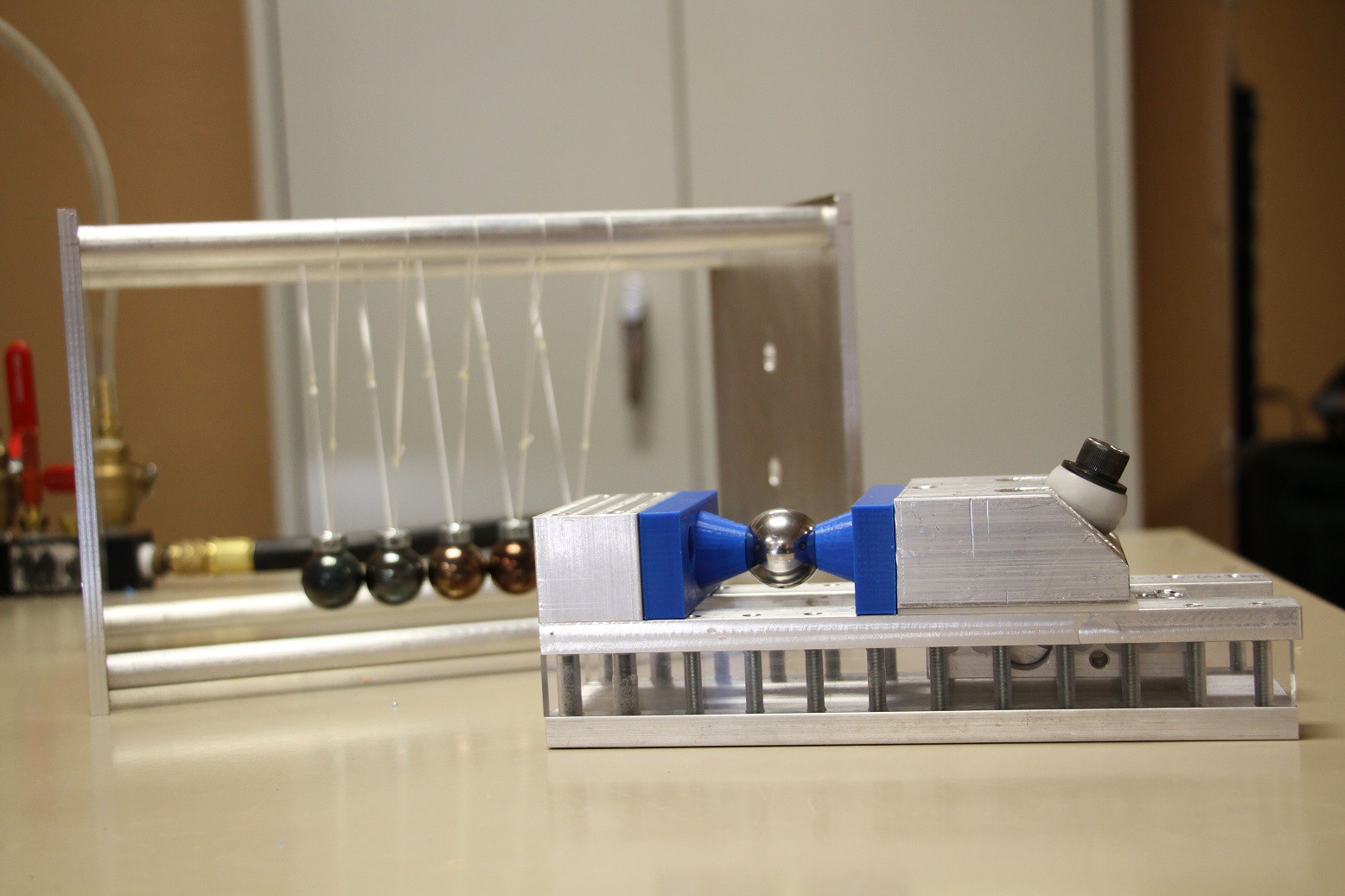!!! Our mechanical engineering consultant surprised us this morning with a new set of 3D printed jaws to test out!
You may have seen our original set of ball pinchers:
- low density (50% fill)
- print time (2+ hours)
- excessive material
- sensitive to print tolerance
Most of these solutions were solved by "cutting-the-fat." Any plastic that wasn't structurally relevant was removed from the design.
Which gave us these Mickey Mouse looking parts.. (non-affiliated, please don't sue us Disney)

The ball-holder surface also underwent optimization. Rather than relying on a spherical divot to grip the ball, which is subject to fail if tolerances are off... the divot was made into more of a conic indentation. We were also able to make it to a 100% fill density.
As an added bonus, the conic divot allowed for the secure grasping of varying ball diameters. Like this 2" steel bearing:
 Greg Stephens
Greg Stephens

Discussions
Become a Hackaday.io Member
Create an account to leave a comment. Already have an account? Log In.
What factors drove the "height" of the custom jaws? It looks like you can print much shorter jaws and still clamp a sphere so did you need a particular clearance around the sides?
How about splitting the custom jaw into its two features for a modular toolset? Eg a strong "offset spacer" part (perhaps aluminium) that bolts to the main jaws but provides the required standoff and work piece access. Then have the "form adapter", eg the conical concave end, seated/constrained on the end of the offset spacer. Then you only have to print small parts to match the form (eg horizontal groove for cylinder shapes) but can retain access to the sides of the work piece.
Are you sure? yes | no
Yeah, that's the idea. It's meant to give access to as much of that sphere as possible.
We were planning on some sort of intermediary plate to quickly snap or slide custom printed jaws to. I think you are right, a version of that with an extended center would save print time for 'small object' pinchers. We should experiment with that. Thanks Simon!
Are you sure? yes | no